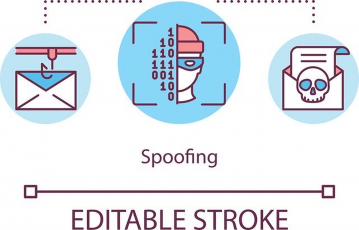With the advent of the internet, the world has seen an exponential rise in cyberbullying cases, also evident from the recent statistics. Sadly, these cases aren’t always targeted, nor do they involve people with personal enmities. Instead, it is becoming a norm among internet users, which needs to be addressed and rectified by exhibiting responsible behavior online.
Wondering why and how cyberbullying became so problematic? It all happened when people started misusing the internet for name-calling and trolling. While typing a few words against someone seems harmless, those words can hurt someone more than you expect.
For instance, recall how the Kenyan President decided to quit social media vociferous citizens bullied him. It hasn’t been more than a year since this incident.
Likewise, do you remember Chadwick Boseman, the Wakanda King actor, a superhero in Black Panther? He got bullied after posting pictures of his emaciated self.
Chadwick was fighting cancer without publicly disclosing it. So, when he posted his photos, people noted his deteriorated health. However, some internet users accused him of using drugs. This trolling made him delete that picture. Later in August 2020, Chadwick passed away. The internet was now in pain because of what the people had made a person living with cancer go through.
It is just a fraction of cases of extreme cyberbullying that happen every day.
With social media and the internet, people have gained more opportunities to express their views uncensored. However, while this promotes freedom of expression, it can also do serious harm when exploited.
Undoubtedly, social platforms connect people across boundaries, turning the world into a global village. However, it has its own disadvantages, like cyberbullying too. Despite numerous awareness campaigns and legislation in place, cyberbullying statistics show the problem is far from over.
Cyberbullying definition
First things first, what is Cyberbullying?
Cyberbullying is any form of social harassment that relies on electronic communication forms such as phones and computers. That includes all kinds and shapes of aggression towards an individual in the form of ridicule, insults, hate speech, stalking, sexual remarks, death threats, impersonation, privacy invasion, or toxic behavior.
Think of this; you post a picture of yourself on your Instagram or Facebook. And, in a few minutes, people are already drooling and spraying you with all the ‘hearts’ and ‘likes’ reactions.
Then, two of your followers decide to take offense with your hairdo. They liken it to some disgusting animal (raccoon) you hate. You find it obnoxious, but they just don’t stop, so they start a hashtag to make fun of you. Can you relate to this?
It all starts as a joke, and then you realize it’s not fun at all. Cyberbullying is the dark side of the internet and the technological revolution. Cyberbullying statistics are shocking and reveal the alarming rate of harassment in the virtual space.
The impacts of cyberbullying have been felt in families and the corporate world. Invasion of privacy ruins careers and breaks relationships. And to put this in perspective, we bring you the global cyberbullying facts and statistics that might shock you.
Disturbing cyberbullying statistics
- 42% of members of the LGBTQ have been bullied online.
- 21% of the victims of cyberbullying are high school girls with a minority skin color.
- Two-thirds of female victims of Internet harassment feel powerless. A third of all teenagers have sent explicit videos or pictures of themselves on social media at least once in their lifetime.
- 34% of American kids have been harassed on the internet at least once.
- Only about 38% of kids who’ve been bullied online seek parental guidance.
- They are left to themselves only. Victims of cyberbullying are 1.9 times more likely to develop suicidal thoughts.
Top 40 cyberbullying stats 2021

While social media has become the primary outlet for expression, little is happening to sanitize the platforms.
The outrageous behavior from many users frequently results in insults and bullying of peaceful people. Here are some of the top cyberbullying stats for 2021:
1. Cyberbullying victims are 1.9 times likely to take their life
It’s not just the reputation and esteem that are on the line when you suffer cyberbullying. It can go to the extent of severe depression and the urge to commit suicide.
Some people take drugs to cool themselves down from the bullying; others take their lives.
Statistics show victims of cyberbullying have suicidal and self-harm thoughts. But there’s also a shocker that the offenders and bullies are 2.1 times more likely to take the same route.
Undoubtedly, bullies are usually people from a depressed, unhappy background who try to feel important by hurting others.
Cyberbullying awareness statistics
About 15 years ago, the word “cyberbullying” didn’t even exist. That’s because there were few or no social platforms on the internet for people to communicate. Yet, today, it is the most rampant of all social evils.
Today, almost everyone possesses a smartphone or a device to access the internet. Also, most of them have social media accounts. Interestingly, this rise in social media use and the subsequent increase in online bullying also compelled people to spread awareness about the problem. Here are some interesting facts about cyberbullying awareness.
2. The last decade has seen a tripling of cyberbullying searches on the internet
There has been a lot of curiosity around cyberbullying, which is evident in the terminology’s, tripling of searches.
Google Trends shows the rate of cyberbullying has increased in the last ten years, stirring insatiable curiosity. Since 2008, the word “cyberbullying” has received three times more searches than ever before.
3. Companies and organizations are playing a significant role in spreading awareness.
45% of employees in big companies agree they have an elaborate cyberbullying policy.
Our extensive research on cyberbullying facts reveals that companies with more than 25000 employees are stringent in their online systems. However, smaller businesses lag in instituting proactive approaches to prevent online harassment.
4. Italy and Sweden lead the world in cyberbullying awareness.
European countries have the best approach towards spreading awareness of online harassment. The global cyberbullying awareness currently stands at 75%. But, for these two countries, it goes up to 91%.
Saudi Arabia is at 37%, making it the most substandard country in online harassment awareness. Given the conservative nature, it’s not a surprise.
However, it’s shocking to find a country like France at the bottom with 50%.
5. Australia and the UK have the best organizational cyberbullying awareness stats
The Australian workers are the best informed about the workplace online harassment policies. 57% of Aussies understand everything about cyberbullying. Also, they’re knowledgeable about how to act in a cyberbullying situation.
Then, 33% percent of Aussies understand workplace policies.
In France, only 20% of employees understand online harassment policies and know how to deal with such situations.
Cyberbullying demographic statistics

Women of color are the most susceptible to cyberbullying. The Cyberbullying Research Center reported racism and sexual indifference as a rampant evil.
And multiracial people are at its center. For example, 29.1% of school cyberbullying victims were teens of different skin colors.
Children between the age of 12 and 17 are the second most vulnerable targets of cyberbullying.
As early as 12, your teenager is already a victim of online harassment, as evident from the previous report from the same organization.
According to their earlier stats, 37% of kids between 12 and 17 years have already faced online bullying by the time you realize it. 25% of these kids have been trolled, insulted, or threatened online. A further 22% is healing a psychological wound after getting gossiped about on the internet.
57% of women interviewed admitted to blocking abusers, while only 22% reported them.
A third of female students, from a large sample of 5700 respondents, fall victim to online harassment. Of these, 10% also admitted to having bullied someone else on the internet.
Children cyber-bullying statistics

6. Three out of five children witnessed online harassment
About 60% of young people have been present to witness virtual harassment. It is 50% more than their adult counterparts are.
Most of them act as bystanders who don’t intervene, thus allowing continued attacks.
Psychologists insist that nobody should watch another one get harassed. Instead, bystanders should speak up so the offender will not perpetrate these grievous acts. It also calls for parental guidance on the use of social media, especially for young people.
7. 37% of teenagers have been targets of cyberbullying
By the time your kid hits 12, they are already the victim of cyberbullying. It is disheartening to realize that 37% of teenagers have gone through this.
35% of children aged between 12 and 17 have been cyber-bullied and have had people write mean comments about them.
8. 22% have been gossiped about online against their will
Then, 30% of kids in this age bracket have gone through racism, identity theft, mean comments, body shaming, or religious bashing.
9. Mental health issues are common among 68% of kids bullied online
More than two-thirds of bullied children have mental health issues. For example, these kids are likely to show anxiety, depression, stress, and acute loss of empathy.
Those below 18 are nine times more likely to fall for fraud.
10. A third of teenagers have shared explicit images and engaged in sexting
33% of young people who responded to a survey showed that they have engaged in sexting. In sexting, online users send images, and text messages elucidate sexual urge—this new trend is rising, especially among teens and kids. The problem is that cyberbullies join and exploit these trends to blackmail teens.
The research found that 75% of teens immediately delete images or texts because they fear blackmail. The problem is that advanced programs and apps download these images and store them already. It breaches privacy and leaves a gray area for investigations.
11. Children and millennials are now less likely to send personal information online
Cybercrime is increasing worldwide, and identity theft is at the pinnacle of it all. The Javelin Strategy and Research Centre reveals more than one million children fall to identity theft every year, costing $1 billion annually. Further, the survey shows a direct connection between scams and cyberbullying.
Besides, many respondents in the US have also admitted to sharing personal information on the internet.
Fortunately, millennials are learning to protect their identity and personal information. For that reason, 68% of teens in the US share less personal data than they used to some years ago.
Instagram and Snapchat still rank as the favorite spot for teenagers at 71% and 66%, respectively. Teenagers hide their identity on these platforms, especially when sharing private photos.
12. Name-calling is the most popular form of online bullying in America
Social networks allow chatting with others; this is where cyberbullying thrives. The offender uses anonymous tricks to talk to teenagers and harass them there.
Snapchat and Chatroulette are some of the popular chat platforms with anonymous chatting. Insults rank higher at 42%, followed by rumors at 32 and explicit images at 25% of cyber harassment.
13. Three out of four of Romanian students get harassed during online classes
Romania has embraced a lot of change, especially during the Coronavirus pandemic.
Despite the pandemic containment policies, the country has firm measures that allow education to continue. But, it’s shocking that virtual learning is facing trouble due to cyberbullying.
14. You will likely feel more pains when bullied online in Poland than anywhere in the world
Of course, cyberbullying has repercussions; in Poland, they are severe.
According to Statista, 9 in every 10 Polish respondents had experienced severe stress and other mental health issues because of online bullying. The victims admitted to having had their personal life shaken and professions ruined.
That highlights Poland as the country with the most painful effects of internet harassment.
15. Mean comments, online rumors, and sexual remarks as the most popular topics on online harassment among US students
The Cyberbullying Research Center focuses on finding information and measures to prevent cyberbullying. The Center finds that most US students have faced online bullying due to their sexual orientation. Mean comments account for 22.5% of all online harassment, followed by online rumors at 20.1% and sexual remarks at 12.1%. Other typical antics include racial abuse, profile hacking, and ridicule.
16. 4-6% of global internet users have been hacked
As per Statista, around the world, 6% of the users of online platforms have been targeted by hackers. 4% have even ended up losing control and access to their devices. While cyberbullying and online safety seem connected, they are vast areas with different dimensions demanding more discussions for public awareness.
It’s not just about being curious (and clicking malicious links) that gets you hacked; someone nasty could also trick you. Unauthorized access to private information is illegal, but that’s not enough. You must know how to stay safe online.
While hacking social media accounts is a menace, virus infections also play a central role at 14%.
Social media bullying stats

Cyberbullying on social media is rampant because people can access these platforms easily.
By creating an account, people on social media live virtually, like they do in real life. Therefore, real-life bullies are likely to replicate that behavior on the internet.
Here are some surprising facts about social media cyberbullying.
17. 80% of children who own mobile phone have been harassed on social media
Most social media platforms usually have a restriction against the registration of children. Their terms and conditions are stringent, only to allow people of sound mind and legal age of 18.
However, children can sometimes be a little cheeky, and 80% of them are on social media and have several profiles on different platforms. These kids tend to be the center of online harassment, and 57% of them have experienced this.
Remember, even looking at a person getting abused online can negatively affect a kid’s psychological behavior. Surveys establish a direct link between the failure to act when a bystander is used to becoming a bully.
18. LGBTQ teens are five times more likely to be harassed on Facebook than the ordinary person
You will likely attract trolls if you have a non-conventional orientation. Harassing LGBTQ teens online is more rampant than it is offline. Here, offenders feel safe enough to get away with what they do against you virtually than they do in real life.
Remember, Facebook has more than 80 million fake profiles and pseudo accounts. These protect the identities of malicious bullies.
19. Women are most susceptible to Facebook bullying
Statista organization says women are more likely to be abused on Facebook than other platforms. Facebook leads the social media vulnerability to cyberbully at 57%. Facebook Messenger comes second at 23% and then Instagram at 10%.
Already, there is a rise in the number of female-targeted online abuse on streaming platforms such as Twitch and YouTube.
20. More than 70% of respondents feel that social media companies need to do more to fight with a cyberbully
While many social media networks claim to have policies for protecting users from cyberbullying, Ditch The Label statistics show that 7 in every 10 social media users feel that these companies don’t do enough.
They feel suspending offenders’ accounts for a few days on these platforms doesn’t suffice. Instead, according to the victims, social media platforms should punish bullies severely.
21. More than 40% of cyberbullying cases happen on Instagram
Instagram is the platform with the highest number of hate-speech cases. Instagram is all about individuals uploading their pictures for other people to see. So, it is likely to invite more online harassment than other platforms.
According to cyberbullying statistics 2020, Instagram records up to 42% of all social media harassment. Considering that only about a billion users are on the platform, you can do the math and see what could happen if there were more.
Then comes Facebook and Snapchat with 39 and 31%, respectively. YouTube only accounts for 10% of the cyberbullying cases in the world.
22. Social media seems to glorify provocative opinions
Social platforms allowing more expressiveness for the users are popular. Statista Organisation puts these platforms at 38%. In comparison, 23% of internet trolls operate on video streaming websites. YouTube, for instance, has the majority of internet trolling.
When social media users express provocative opinions, their followers flock there. That’s how the trolls survive in the chaos.
23. Communist countries are happy with the measures set to control cyberbullying. But Europe and South America are dissatisfied
South America and Europe show dissatisfaction with how the government handles internet harassment. Even in regions with solid anti-bullying legislation, people don’t find the measures sufficient.
Only 15% of Chileans and 13% of Serbians have shown satisfaction. Then 37% of Russians and 41% of Chinese are happy with the current state of anti-cyberbullying affairs.
Cyberbullying in gaming

Gaming platforms are a go-to online space for leisure.
Interestingly, the clique of people who gamble or play games online is tech-savvy. So, most of them understand how to use the internet in an advanced manner than ordinary users. That’s why these cyberbullying facts about gaming might surprise you.
24. 38% of gaming enthusiasts have been hacked
Ditch the Label Organisation, working with anti-bullying campaigners including Habbo, interviewed 2500 people. They found out that nearly four out of ten respondents have had their gaming accounts hacked.
And trolling is very common in the gaming rooms and platforms at 64%. Hate speech comes second at 57% and personal threats at 47%.
Remember, most people who like trash-talking when gaming will probably want to replicate that online.
25. Online games have the highest rate of cyberbullying
In 2016, the Cyberbullying Research Center compiled genres of games likely to harbor bullies.
MMORPG topped with 26.8% as the most likely game to get you harassed. Then, TPS and FPS games followed closely with 24.5% and 14.2%, respectively. But then, sports games like FIFA by EA sports team also appeared on the report, constituting 11.9%.
Understandably, exciting games that attract huge communities have the highest rates of cyberbullying. This data also raises alerts for PUBG lovers since it’s among today’s most exciting games.
26. Anonymity is the main reason for bullying
Many teenagers believe that anonymity in gaming gives trolls and bullies a hideout. Specifically, 6% of these teenagers believe that anonymity contributes to cyberbullying in multiplayer games.
When ISCAP organization asked a group of online gamers, 805 out of 936 chose anonymity as the top cause of bullying in gaming. Six hundred five attributed the increasing rates of cyberbullying to lusting and drooling for attention.
76% believe these bullies are ignorant of the effects of cyberbullying in real life. And 73% held that most gamers did not fear punishment, hence becoming delinquent.
27. Gamers are more prone to cyberbullying than non-gamers
Gamers are more likely to become online trolls than non-gamers. 11% of Gamers have engaged in online harassment than only 8% of people who don’t do gaming. It’s not easy to put that perfect link between gaming and cyberbullying. But, more gamers have engaged in cyber trolling than non-gamers.
And in a turn of events, more gamers have been victims of cyberbullying than non-gamers. Typically, 40.7% of online game enthusiasts have suffered online harassment compared to the 27.2% of non-gamers.
Cyberbullying statistics in the USA

American bullying is a common practice on online platforms. About 33.8 percent of middle and high school students in America have been the targets of online harassment. It includes hurtful online comments as well as threats or hacking.
28. 26% of all American internet users have been targets of online trolling
Nearly half of American experts are skeptical about the future.
From a 1500 experts sample, 42% of Americans do not expect improvements in decency or decorum on the internet in the future. Whereas 39% believe the blogosphere is full of hatred and bigotry.
Nevada has the most notorious trolls as it’s the most ferocious and vociferous state in America. Yet, surprisingly, NV has an anti-cyberbullying legal framework against bullying in place. It’s even a crime to bully someone online. Yet, it has the highest rate of cyberbullying in the US.
Maryland and Vermont rank as 2nd and 5th cyber-bullies in America. These states have also neglected the victims of online harassment. The perpetrators never fear the law because of no relevant legislation in place.
Iowa has the second most brutal comments among all US states. It also ranks the third-last place in the number of people who have reported harassment. But, people suffer in silence as they receive cruel and toxic online treatment.
New Hampshire is the friendliest US state with the lowest ratio of hostile comments. It also ranks the fifth-lowest with the fewest people bullied online. Also, this state has strict laws against cyberbullying, which qualifies them as the American cyberspace role model.
At 23.4%, Louisiana has the highest form of cybercrimes against school students in America.
Statistics on victims of cyberbullying

Worryingly, people worldwide exhibit drastic variations in how they perceive cyberbullying. A majority consider online harassment normal, requiring no steps.
However, psychologists believe that stress and depression have skyrocketed in the last decade due to social media.
When online users publish opinions or pictures of themselves, they attempt to find empathy. But the subsequent online bashing hits them emotionally.
Here are some of the worrying statistics of cyberbullying victims.
29. Nearly half of the LGBTQ youth have experienced harassment on the internet
You are vulnerable to cyberbullying if you have an unpopular orientation.
42% of youth in the LGBTQ (the gay community) have been insulted or bashed online. 35% of them have gone ahead to receive threats online. About 58% of them have experienced hate speech directed at them.
The group continues to gain freedom as governments worldwide adopt pro LGBTQ laws. But, they still have to struggle (and suffer) a lot.
30. Disabilities and mental problems are the main target of bullies
Bullies often look for people with disabilities and mental problems.
Autism stands out as the most openly bashed condition with 75%. Then people with physical defects also get trolled on the internet at 70%. Also, individuals with learning problems are 52% more likely to have people making fun of them.
Young respondents reveal that natural disabilities are a central target for online bullies. It calls for awareness and prevention of cyberbullying and to make social networks safe enough for everyone.
31. Women are the main targets of trolling
Unsurprisingly, women are at the center of online harassment. Surveys reveal a worrying trend whereby one of every three girls has fallen victim to this plague. And, only one in ten admits to having bullying someone.
Female students in America are 36.7% more vulnerable than their male counterparts. Yet only 10.2% admit to having been perpetrators of harassing people online.
A statistical distribution of cyberbullying in the world

While cyberbullying is widespread, determining its stretch in the global community is tricky.
Some countries take these vice more seriously than others, while others show a higher rate of online harassment against a particular group than the rest.
For instance, European cyberbullying statistics conclude young teenagers as the primary victims of online harassment.
Teenagers between the ages of 13 and 15 are vulnerable to cyberbullying because they access phones and computers at a young age. Of course, there are pros and cons to these. But, some of these teens could end up becoming trolls themselves.
Similarly, you will likely attract trolls online if you engage in political discussions in America.
63% of American online bullies have strong political opinions, followed by those who love entertainment and celebrities at 52%. People that publish religious-related stuff are 48% more likely to be cyberbullies.
Psychologists agree that internet trolls ride on emotions by taking strong opinions on delicate topics. They drop controversial and unpopular views to which people will likely give aggravated reactions. So, these online trolls exploit this instinct to become popular among their peers. But in the process, they promote the bashing of innocent people.
32. Only a third of students in the UK are safe from cyberbullying
UK students have not faced much online bashing like their American counterparts. 35% of these students have never experienced online bashing. However, during the DitchTheLabel study, 7% admitted they were suffering and experiencing bullying.
Yet, the trend projects to a worrying state, especially in the last half a decade or so. Many children are still hesitant to accept that they are victims of cyberbullying. But, school-going teenagers report a rise in the rate of online aggression cases.
What parents think about cyberbullying

After realizing that most online trolling happens to children, it’s only fair to find out parents’ points of view about this vice.
The following statistics show parents’ awareness of this phenomenon.
33. Parental awareness of cyberbullying is high in the West and low in the East
Parents from different countries in the world have varying views about cyberbullying.
India, Brazil, and America have rising parental awareness. For instance, about 40% of Indian parents have reported that their children faced cyberbullying at some time. But only about 4% of parents in Japan filed such a report.
Besides, European countries are still stagnant. Yet, Russia has a nearly 0% reporting rate, which shows the level of obliviousness in this matter.
34. Parents believe internet addiction is more worrisome than cyberbullying.
Statista reports that 14% of parents worry more about their kids’ internet addiction. It’s a massive contrast to the 7% who thought cyberbullying was a big issue.
35. Asian parents tell children about cyberbullying all the time
The majority of Asian parents understand the dangers of cyberbullying. They even decide to speak to their kids about it. Roughly 46% of these parents do it all the time, while 39% tell them often. However, 12% have never engaged their children in any discussion about online harassment.
36. Two-thirds of parents believe social media is a high-risk platform for kids
When Statista interviewed about 20000 parents worldwide, 65% believed social media isn’t safe for their children. Whereas 30% considered text messages a high-risk social engagement, 34% held chat rooms as the leading platforms where harassment thrived.
There’s, however, a sharp difference between kids and their parents. Parents believe Twitter and Facebook are the platforms responsible for cyberbullying. But, the kids rate Instagram and Snapchat as the leading avenues.
Statistics of cyberbullying effects

Victims of cyberbullying could end up becoming bullies themselves. And worse, they might even resort to suicidal thoughts after getting harassed.
Trolls ride on highly dynamic aspects of life, thereby hurting people. Here are some worrying statistics about the effects of cyberbullying.
37. Female victims easily lose self-esteem
Wondering how does internet harassment affect women’s life offline?
Usually, victims experience mood swings, panic attacks, and depression. Some females, particularly those in puberty, may feel suicidal as the underlying biological state already amplifies stress and anxiety.
Statista Organisation studied 1000 women between the age of 18 and 55. Of them, 66% admitted feeling powerless after the attack; 63% couldn’t sleep, while 61% lost their self-esteem.
38. Teens find it challenging to learn or stay at school
Florida Atlantic University studied the learning patterns of 5400 students. Of the 64% of victims who had problems learning, most felt unsafe in school and could not concentrate on their studies.
39. Cyberbullying makes Asians more aware and vigilant
Not all the effects of cyberbullying are scary. For example, Asia boasts some positive cyberbullying effects.
Reportedly, 24% of victims in Asia went ahead to become more vigilant. 7% of those who witnessed cyberbullying felt the urge to make a change.
40. Online harassment pushes victims to suicide, depression, and self-harm
As said above, cyberbullying has a direct connection to suicide. 24% of people facing severe harassment contemplated suicide.
According to Ditch The Label Organisation, four of ten victims develop psychological complications following online bullying. For instance, 37% become anxious, while 36% fall into depression.
A few cyberbullying statistics takeaways
Cyberbullying incidents have tripled since the last decade. The onus is on the exponential growth of social media and the internet. As digital platforms continue to evolve, the shape and form of cyberbullying grow as well.
Online bashing is typical among internet users who publish religious and political opinions that stir up emotions.
Cyberbullying facts show that young children, women, and the LGBTQ community are the primary victims. Often, trolls mask their identity to perpetrate these heinous acts against them.
Some cyberbullying victims fall into anxiety and depression. Then, students become unable to concentrate on their studies as they fear the trolls.
Knowing these cyberbullying statistics will help create awareness among the parents, students, and authorities. These online harassment stats are not just numbers; they represent the real people who suffer the digital mess constantly.
Theoretically, the surest way to prevent cyberbullying is to stay away from the internet. But, this is not viable in today’s digital world.
So, you may want to use software that helps you keep your kids safe online or control what they do on the internet. Indeed, monitoring your children’s online activities can save them from cyberbullies. Also, teach your kids about cyberbullying, train them to respect others, and make sure you do not raise a bully at home.






